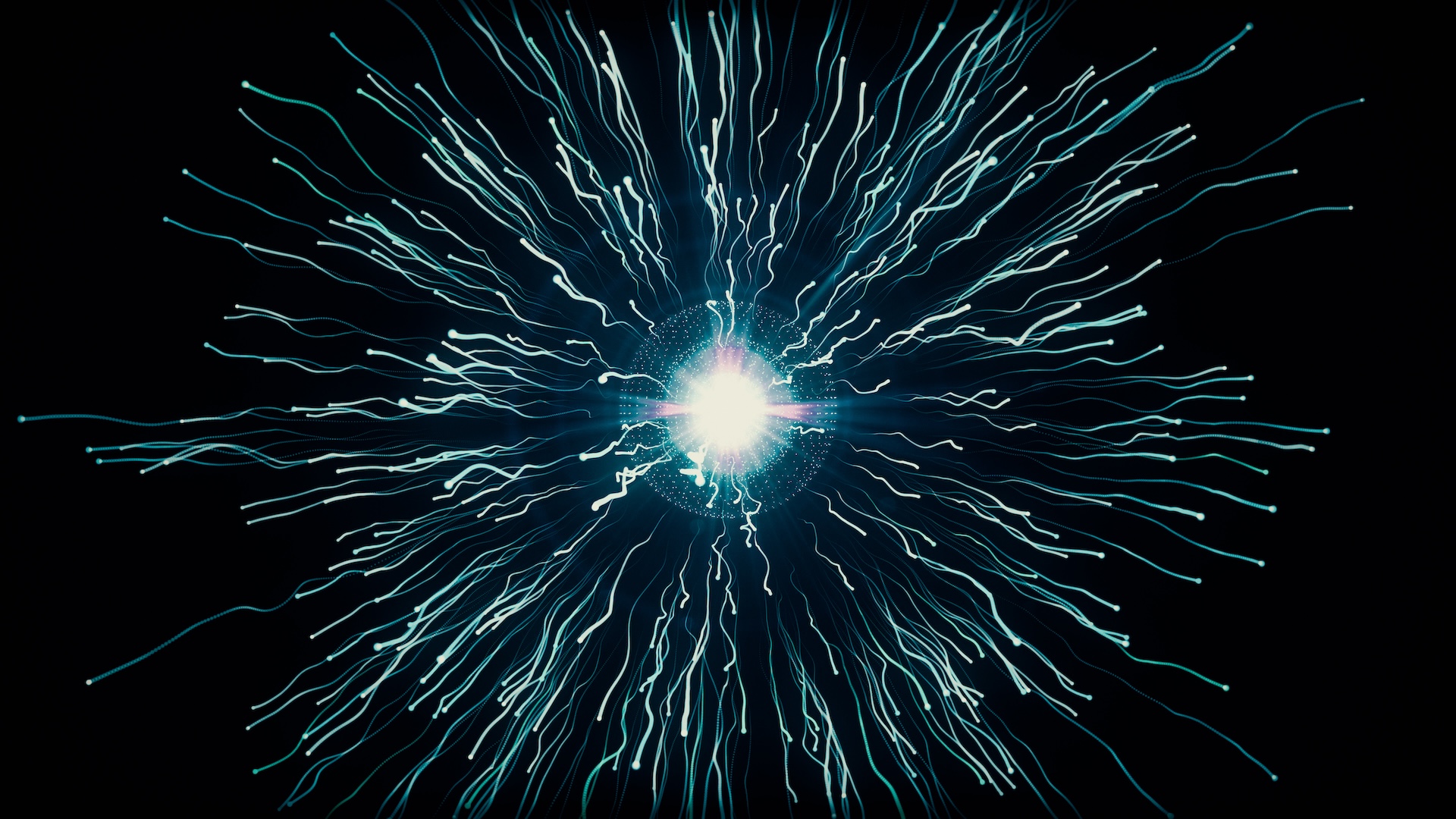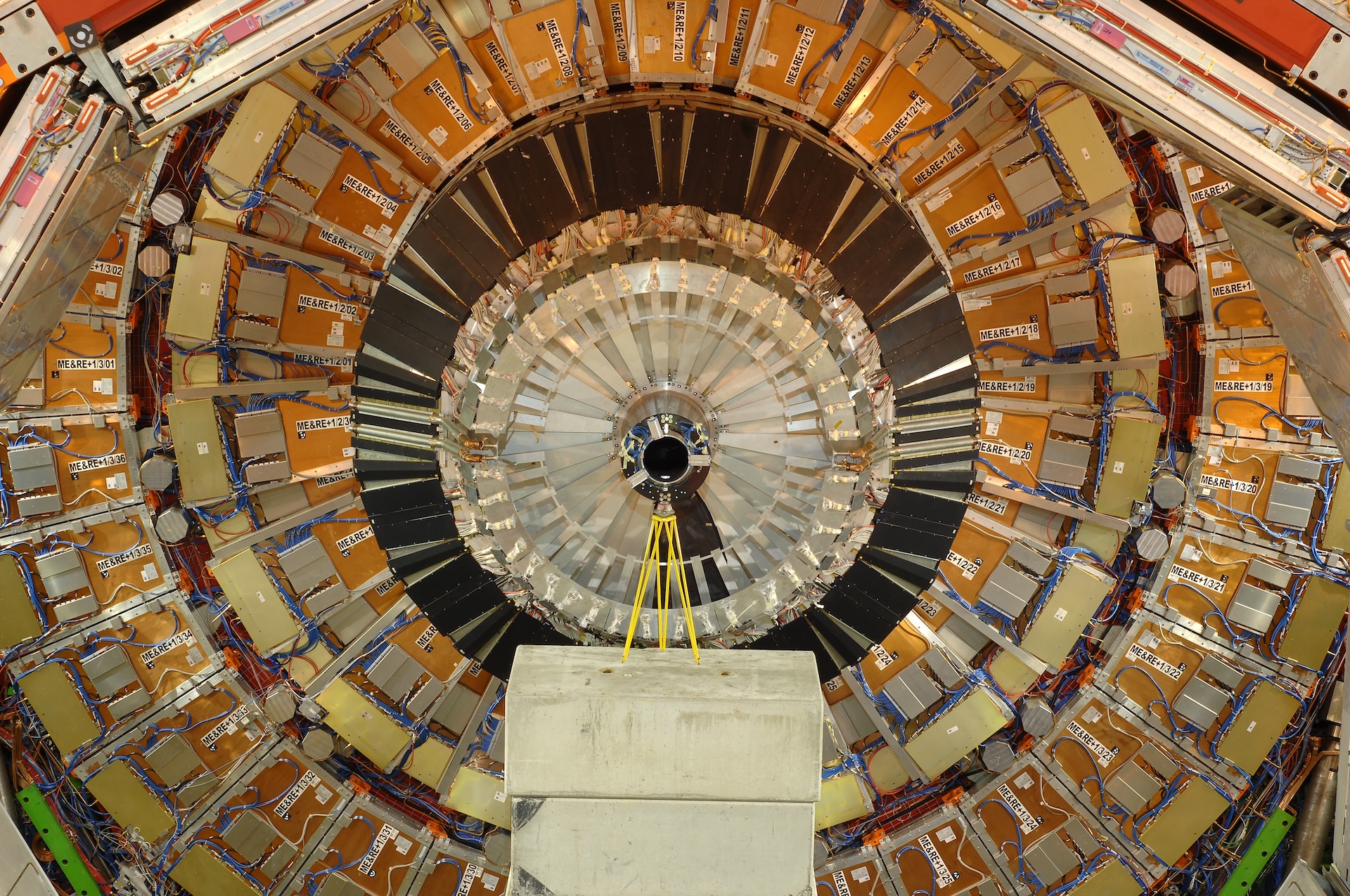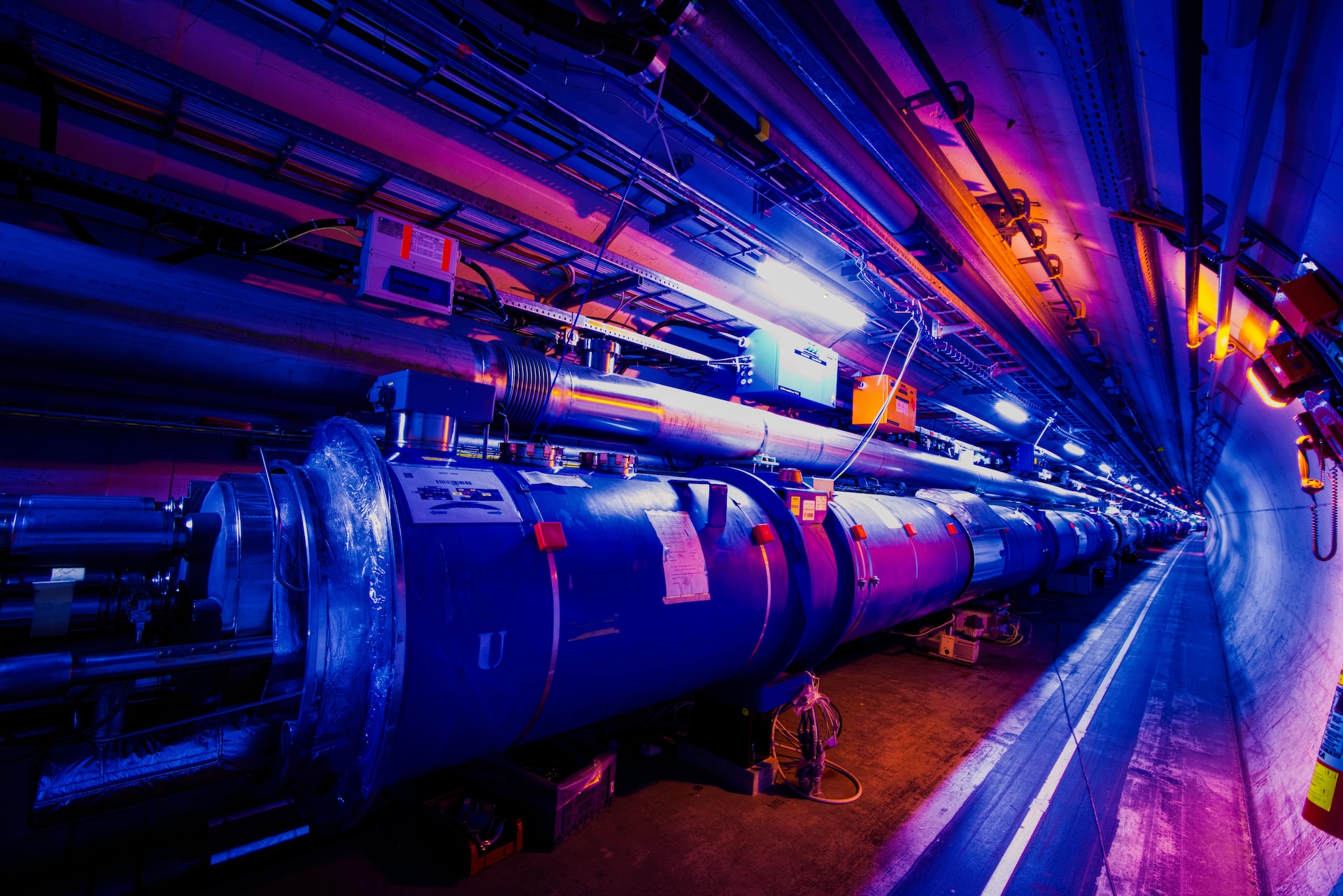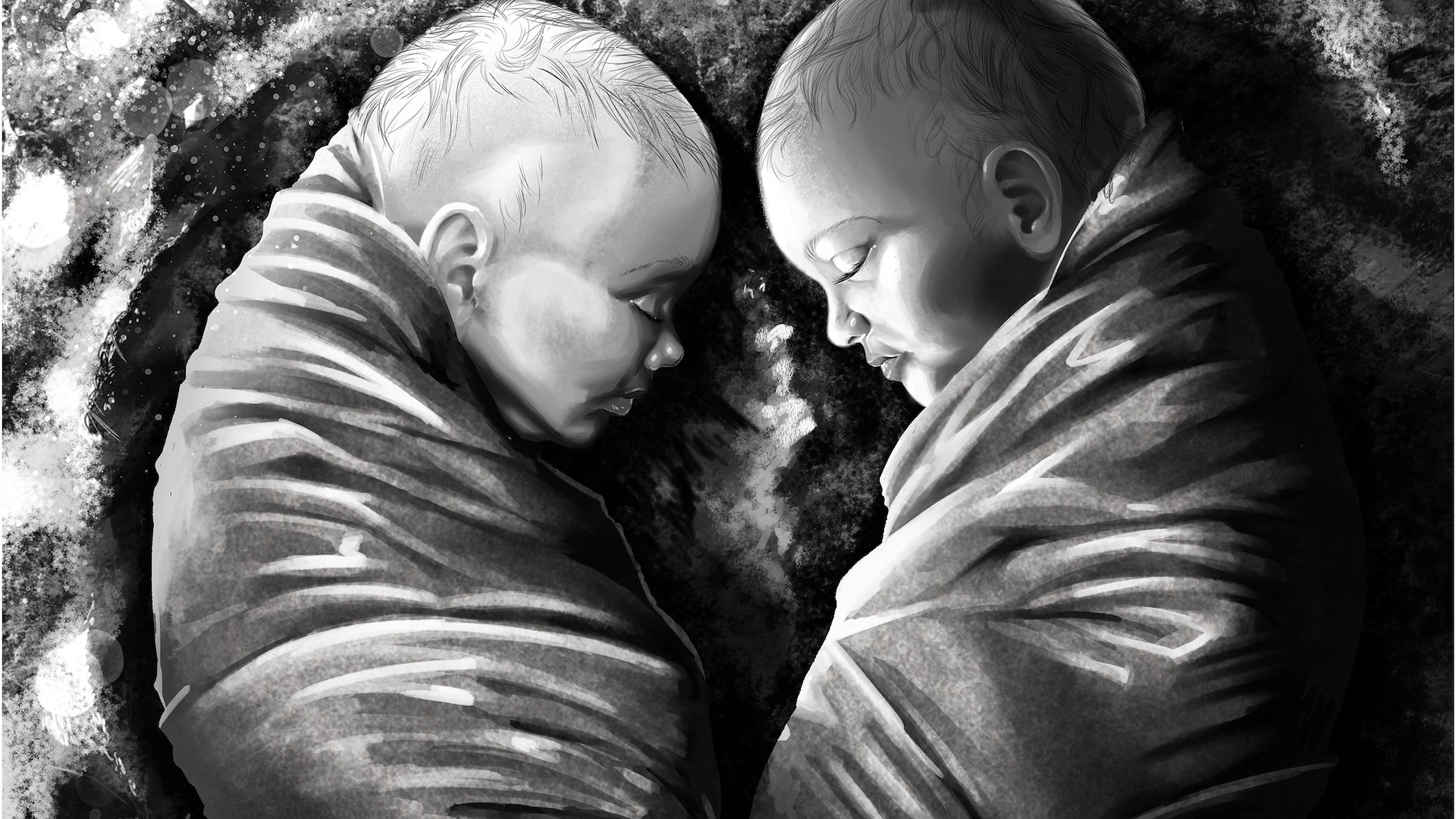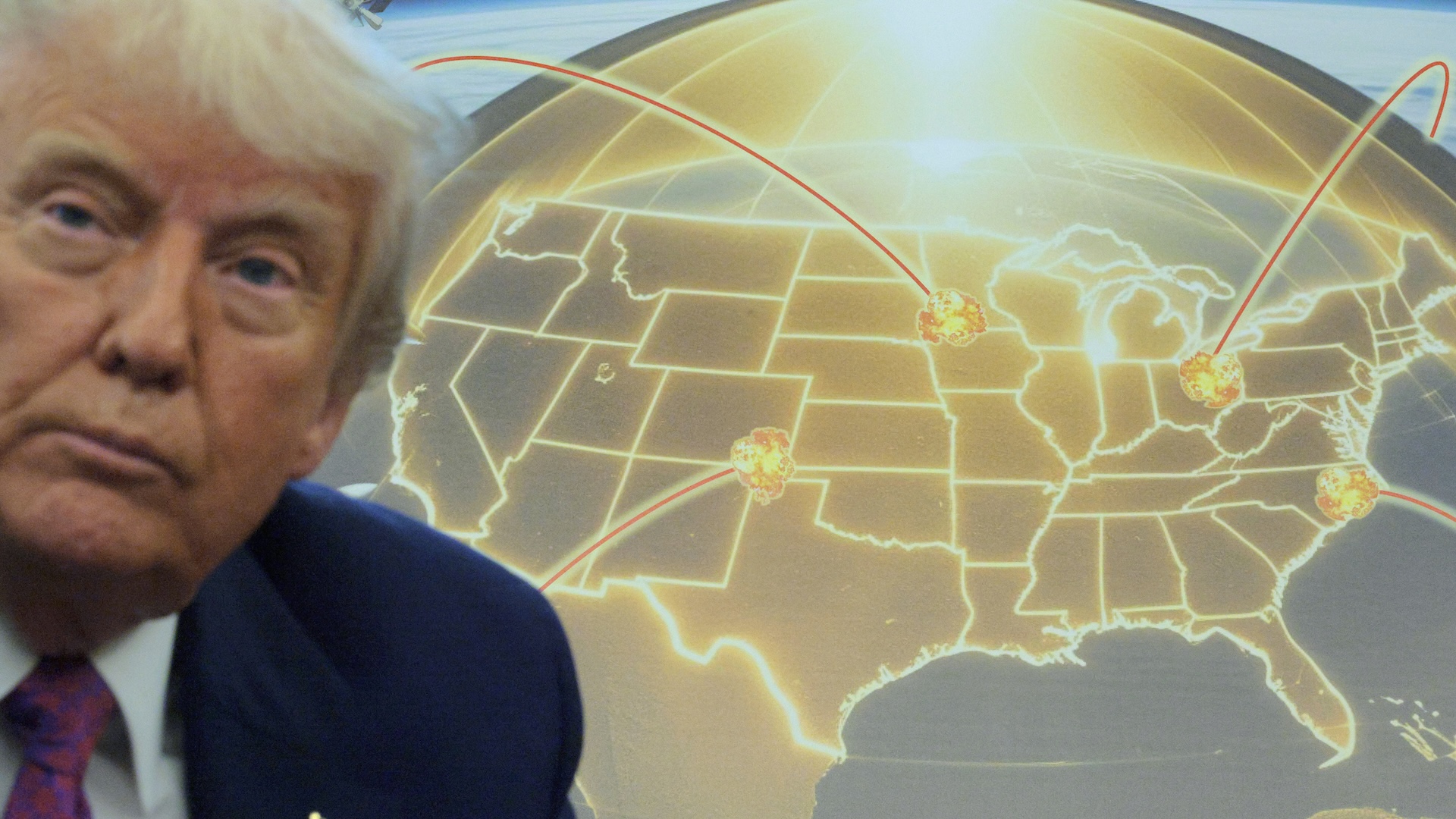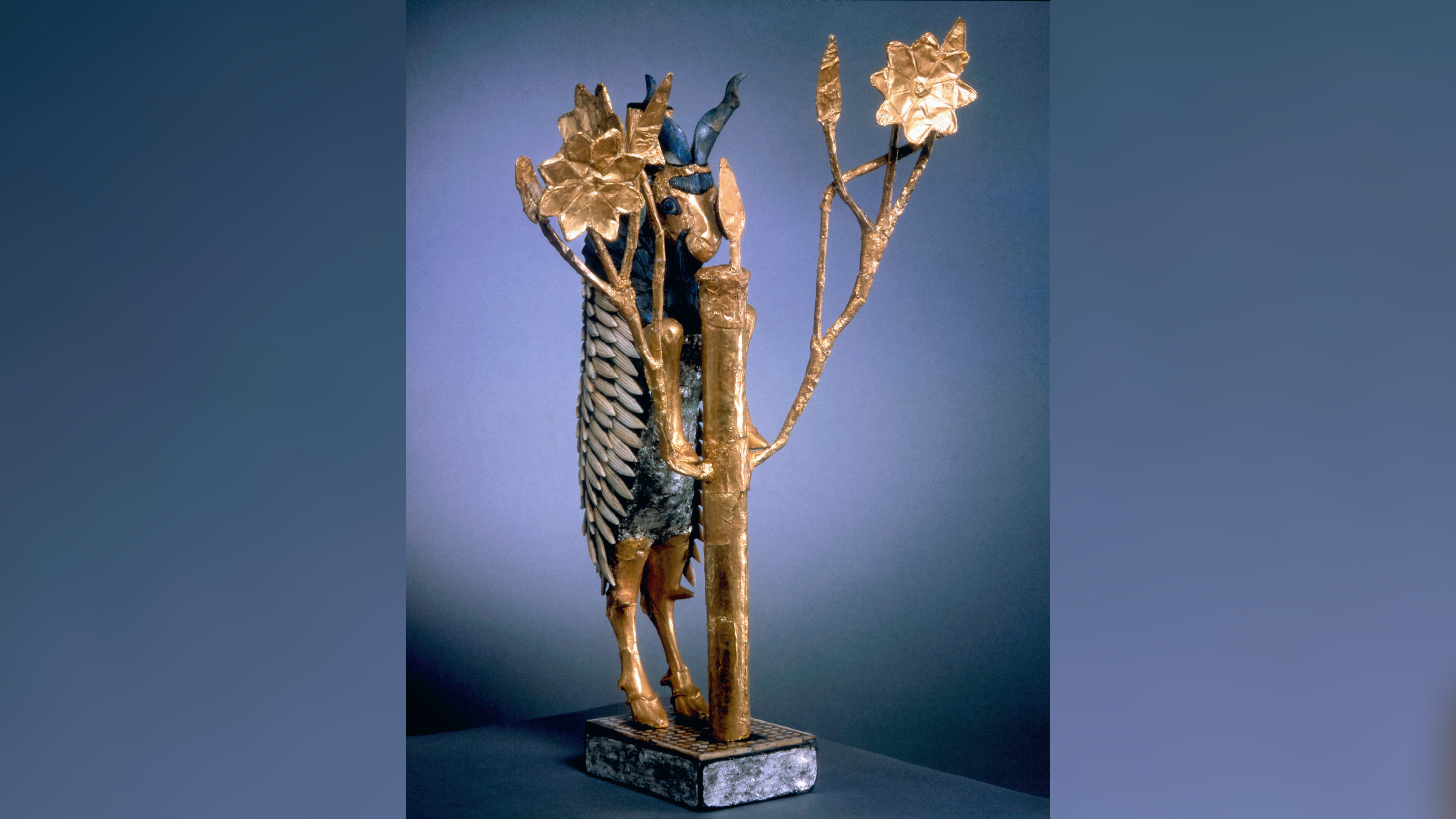Quick facts about particle physics
Number of known elementary particles: 61
The particles that are in an atom: protons, neutrons and electrons
The particles that are in protons and neutrons: quarks
The four fundamental forces: gravity, electromagnetism, the strong force and the weak force
Particle physics describes the universe at the smallest scale. This includes subatomic particles, like protons and neutrons, as well as elementary particles, like quarks and electrons, which make up subatomic particles. It also includes the forces that govern how particles interact, including electromagnetism and the strong and weak forces holding atoms together. Weirdly, there are even particles that carry forces, such as photons (which transport energy from the electromagnetic force, or light particles).
Particle physics is sometimes called high-energy physics because scientists can only study subatomic particles using high-energy experiments — for example, by smashing atoms together at nearly the speed of light.
Everything you need to know about particle physics
What is particle physics?
Particle physics is the study of the universe at the smallest scale possible — the most elementary particles and forces that, when combined, make up everything. You — along with every other living thing, every speck of dust and every star in the sky — are all made of the same fundamental particles.
You might think of a particle as a tiny speck of dust or a grain of salt. However, when physicists talk about particles, they mean a teensy, tiny thing that is best described with math. Particles don’t behave the same way as everyday objects. And they are so small that we don’t measure their size in terms of length or width, we measure it in energy. We’re not even sure if electrons have a size at all — no one has been able to find it.
Some particles are extremely unstable, lasting only fractions of a second. We can create and study them, even with such short lives, through instruments like the Large Hadron Collider (LHC), a giant particle accelerator that works by smashing beams of particles into each other at nearly the same speed light travels in a vacuum. The LHC is buried in a 17-mile-long (23 kilometers) tunnel under France and Switzerland, where it uses more than 10,000 powerful magnets to shape the beams into circles and steer them into each other. The resulting collisions make new and interesting particles.
What is the Standard Model of particle physics?
The Standard Model of particle physics describes all of the known elementary particles and three of the four known forces that define how they interact with each other: the electromagnetic force, “weak interactions” and “strong interactions.” Strong interactions are what holds some elementary particles together, like the protons and neutrons that make up an atom’s center. Weak interactions are called “weak” because they work over much smaller distances than strong interactions — less than the diameter of a single proton.
You might have heard that light acts like a wave, and electrons act like particles. In physics, when something acts like a wave, it acts like a lake — it has ripples that go up and down in a regular way and is one big thing. When things “act like particles,” they’re more like a pile of very small rocks. You could count the rocks and know exactly how many there are. For a long time, scientists thought things acted like either waves or particles, but this isn’t true — peer inside an atom and things act like both. This is called wave-particle duality, and the Standard Model was developed in part to explain it.
How can something act as both a unique object and a wave? Subatomic particles are best described with fuzzy math. We don’t know exactly where an electron is — but we know the odds that it’s at a certain point in a general area that is ringed by a boundary. Those odds are described with an equation called the wave function. When we measure behavior that looks like a separate object, we’re focusing on the boundary. When we measure behavior that looks like a wave, we’re focusing on the probability.
In 2012, scientists discovered the Higgs boson particle, which is an extremely unstable particle that gave mass to all particles with mass just after the Big Bang. The finding was an important validation of the Standard Model, which had predicted the existence of the particle.
The Standard Model has some holes, however. The most obvious problem is gravity — physicists haven’t found a way to incorporate gravity into the Standard Model. It’s still the best tool we have for describing subatomic particle behavior— it’s extremely accurate, except for gravity.
What particles make up an atom?
Atoms are made up of protons, neutrons and electrons. The number of protons, neutrons and electrons determine how the atom interacts with other atoms. The periodic table is a guide to the different kinds of atoms; it’s full of patterns that map out how each element acts.
The periodic table’s atomic number tells you how many protons (particles with a positive electric charge) are in the material. They are clustered within the atom’s neutrons to make up the nucleus. Neutrons have no electric charge, but they do have mass. Protons and neutrons make up most of an atom’s mass.
Orbiting the positively charged nucleus are electrons — tiny particles with a negative charge. The charge of each electron has the same magnitude as a proton, defined as one elementary electric charge (1 e). The number and position of electrons are shown on the periodic table by the element’s row and column.
What other kinds of particles are there?
Protons and neutrons are made of even tinier elemental particles called quarks. There are six “flavors” (types) of quarks: up, down, charm, strange, top and bottom. They form groups of three to make up protons and neutrons, held together by their “color charge.” Color charge has nothing to do with the colors we see; it’s just a term to identify interactions that hold the quarks together. The color charge is similar to the electric charge, but instead of having a positive or negative charge, there are three “colors” that a quark might have: red, green or blue.
There are also leptons. These elementary particles are similar to quarks, but unlike quarks, leptons don’t have “strong interactions.” In other words, they don’t form the same type of bonds quarks do. Electrons are a type of lepton, along with muons, tau leptons and neutrinos. Muons and tau leptons are unstable and decay into electrons. Neutrinos are leptons with no electric charge.
Quarks and leptons are fermions — the elementary particles that make up matter. Another group of particles, known as bosons, act as “force carriers.” That means they hold the forces that let particles interact with each other. Types of bosons include photons; gluons, which help bind particles together; Z bosons; W bosons; and the mysterious Higgs boson, which, in concert with the Higgs field, lends particles their mass.
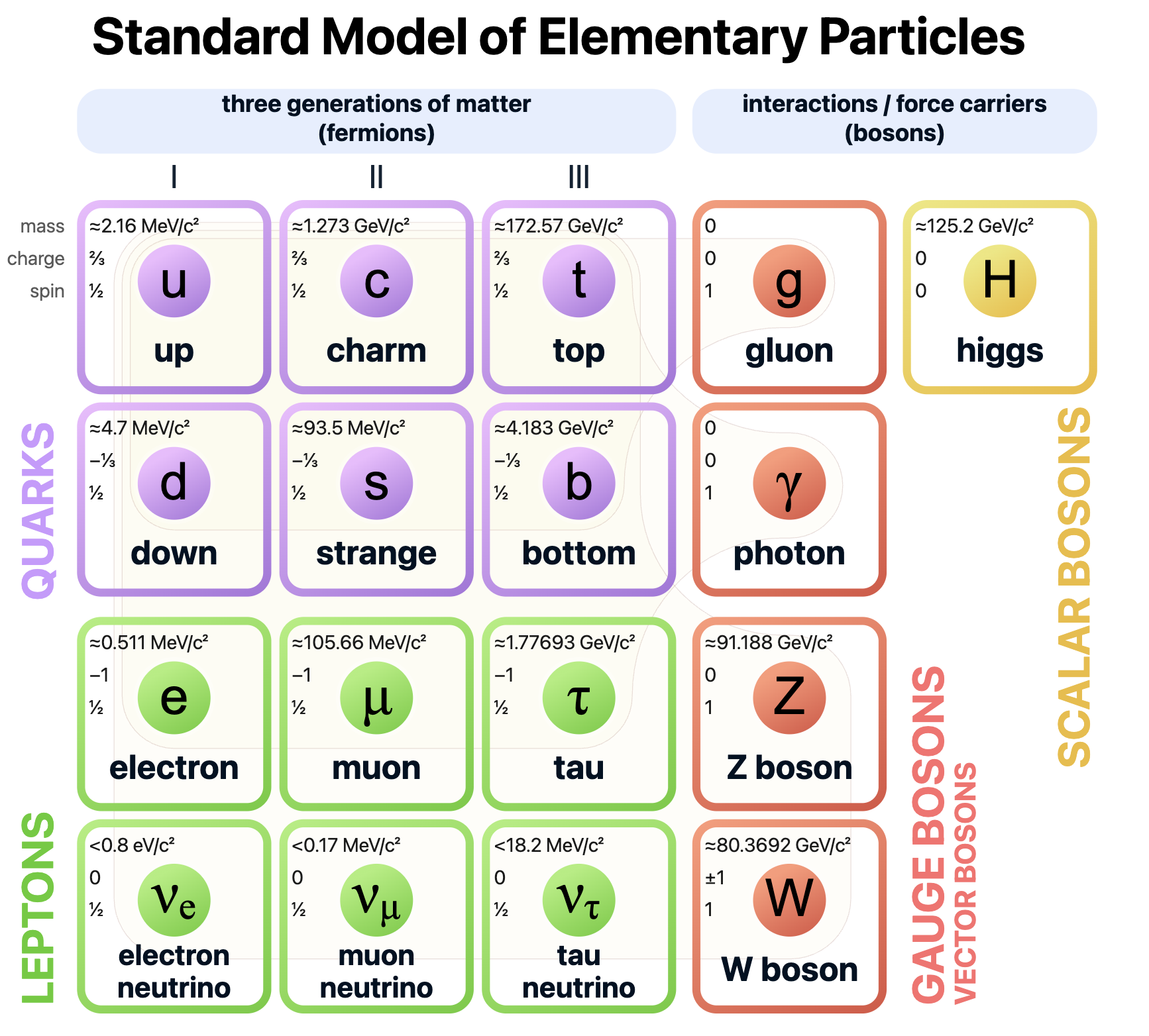
Who are some famous particle physicists?
Satyendra Nath Bose (Jan. 1, 1894 – Feb. 4, 1974) was a pioneer of quantum mechanics who, along with Albert Einstein, developed a new type of statistics that describes how bosons behave with wave-particle duality. Bosons are named after him.
Chien-Shiung Wu (May 31, 1912 – Feb. 16, 1997) worked on the Manhattan Project and conducted physics experiments to study beta decay, the process radioactive materials undergo to become more stable. She was not included in the 1957 Nobel Prize in physics awarded to her two male colleagues, despite providing the first experimental evidence of beta decay.
Peter Higgs (May 29, 1929 – April 8, 2024) was the physicist responsible for the part of the Standard Model of particle physics that explains how particles got their mass at the beginning of the universe. The Higgs boson is named after him. He won the 2013 Nobel Prize in physics, which he shared with François Englert.
Paul Dirac (Aug. 8, 1902 – Oct. 20, 1984) helped develop the theory of quantum mechanics and shared the 1933 Nobel Prize in physics with Erwin Schrödinger. He developed the Dirac equation, which describes how fermions act as both particles and waves. He also predicted the existence of antimatter, which is matter with the same mass and the opposite electrical charge as ordinary matter.
Marie Curie (Nov. 7, 1867 – July 4, 1934) discovered radioactive decay — the process some unstable elements undergo to transform into elements that are more stable. She advanced our understanding of atomic structures and won two Nobel Prizes — one in physics and one in chemistry.
Richard Feynman (May 11, 1918 – Feb. 15, 1988) worked on the Manhattan Project and developed the Feynman diagrams — a way to describe the behavior of subatomic particles. His work expanded our understanding of quantum mechanics.
Particle physics glossary
- Boson: Bosons make up one of the two classes of fundamental particles. Bosons carry the forces between particles. Bosons have a spin quantum number — the number defining the intrinsic spin of a given particle — that is an integer (for example, 0, 1 or 2). Photons are a type of boson.
- Fermion: Fermions make up the second class of fundamental particles and help make up matter. They include protons, neutrons and electrons. They have a half-integer spin quantum number (for example, 1/2, 3/2 or 7/2).
- Quark: Quarks are elementary particles that combine to form composite particles, such as protons and neutrons. There are different types, or flavors, of quarks: up, down, charm, strange, top and bottom. All normal, observable matter is made of up quarks, down quarks and electrons.
- Lepton: Leptons are elementary particles that have a half-integer spin and are not subject to the strong nuclear force, which confines quarks into protons, neutrons and other particles. Electrons are a type of lepton.





